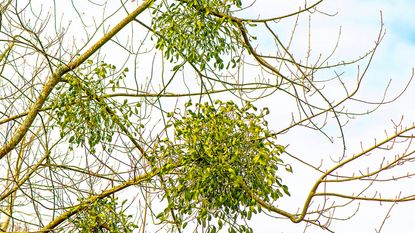Top 10 Poisonous Garden Plants


Not to freak anyone out, but the garden can contain many surprising dangers. Some of our most common ornamental plants and wild volunteers are actually poisonous and have the capacity to be harmful to humans or our pets.
For instance, in the Pacific Northwest foxglove comes up everywhere like a weed. Foxglove is in the Digitalis family and has high levels of a cardiac glycoside, which has the potential to cause death.
It is important to be aware of the potential dangers in your garden to protect yourself and your family from accidents. Poisonous plants abound and are historically important through the ages. Plants have been used to both kill and cure, and their toxicity has different levels depending upon the species.
Plants in the Nightshade family are notoriously toxic but a few of their members, such as potatoes and tomatoes, are commonly eaten produce in almost every home. Even simple yews in the genus Taxus are toxic to cattle and potentially deadly to small children. All parts of the plant are toxic, but we still find all types of yews in the landscapes of many homes.
As you walk around your landscape, it is interesting to see the common plants that have been purposely installed and, yet, have the potential to cause drama if ingested or occasionally touched. Here are the top 10 poisonous plants in or around the home:
1. Apple. In the number one spot, we have the apple. Yep, you read correctly. Apples (and apricots as well) have extremely toxic seeds. Of course, you would have to eat more than an apple a day to receive any adverse effects, but they are listed as majorly toxic on the Poison Control's plant list.
2. Delphinium. Most of us are familiar with these perennials, which produce lovely blue flower spikes that tower over sweet basal rosettes of leaves. The delphinium plant has an extremely toxic diterpenoid alkaloids in all parts of the plant, however, and are dangerous to both domestic and wild animals, as well as humans.
Gardening tips, videos, info and more delivered right to your inbox!
Sign up for the Gardening Know How newsletter today and receive a free download of our most popular eBook "How to Grow Delicious Tomatoes."
3. Rhododendron. Our third culprit is found in gardens across the nation. It is Rhododendron, a native plant that is found wild in many of our forests and clearings.
4. Oleander. Oleander is primarily found in the warmer regions of the country, but it has the ability to cause death with very small doses ingested. This fatal beauty has long been a solution plant for unhappily married people over the centuries.
5. Jasmine. At number five, we have another warm to temperate season plant…jasmine. The flowers are the huge draw in these glossy leaved plants, but the fruits are the source of the danger. Even a few can cause death.
6. Hydrangea. Hydrangea plants can be fatal in some species and simply toxic in others. If you don't know which is which, err on the side of caution and keep plants away from pets and children.
7. Rhubarb. Rhubarb is fatal if large amounts of leaves are eaten. The stalks seem safe enough but use them in a judicious manner and avoid overeating this plant.
8. English Laurel. Aka cherry laurel, this plant is so often used in the landscape that you can scan most neighborhoods and find several hedges built out of this popular and rapid growing bush. The seeds in the fruits are extremely poisonous and some sensitive individuals have experienced contact dermatitis with uncomfortable symptoms.
9. Mistletoe. Mistletoe hanging above the door may be just the thing to entice a reluctant sweetie into a kiss, but its berries are absolutely deadly and can potentially ruin a Christmas party if ingested.
10. Poinsettia. In warm, tropical regions you can grow poinsettia outdoors, but the rest of us have to enjoy the plant in a container inside where it's warm. Although considered low in toxicity, these prolific winter holiday plants have milky sap that has the potential to make children and pets ill if eaten. This sap can also cause skin irritations in sensitive individuals.
This list only touches upon 10 of our common garden denizens. Be aware that many plants familiar to us in our landscapes have the capacity to cause discomfort, illness or even death. In all cases where an animal or small child may have eaten something unfamiliar in the garden, contact your poison control center immediately!
-
 Want a Backyard Mini Orchard? Create Your Own Container Orchard
Want a Backyard Mini Orchard? Create Your Own Container OrchardEasier to care for in small spaces, a backyard mini-orchard makes sense for busy gardeners and juicy fruit is the reward.
By Teo Spengler
-
 Urban Beekeeping Guide: Top Tips For Raising Bees In The City
Urban Beekeeping Guide: Top Tips For Raising Bees In The CityUrban beekeeping can be a rewarding and appreciated pastime, but first be sure it’s legal in your city and learn the ropes of beekeeping.
By Mary Ellen Ellis